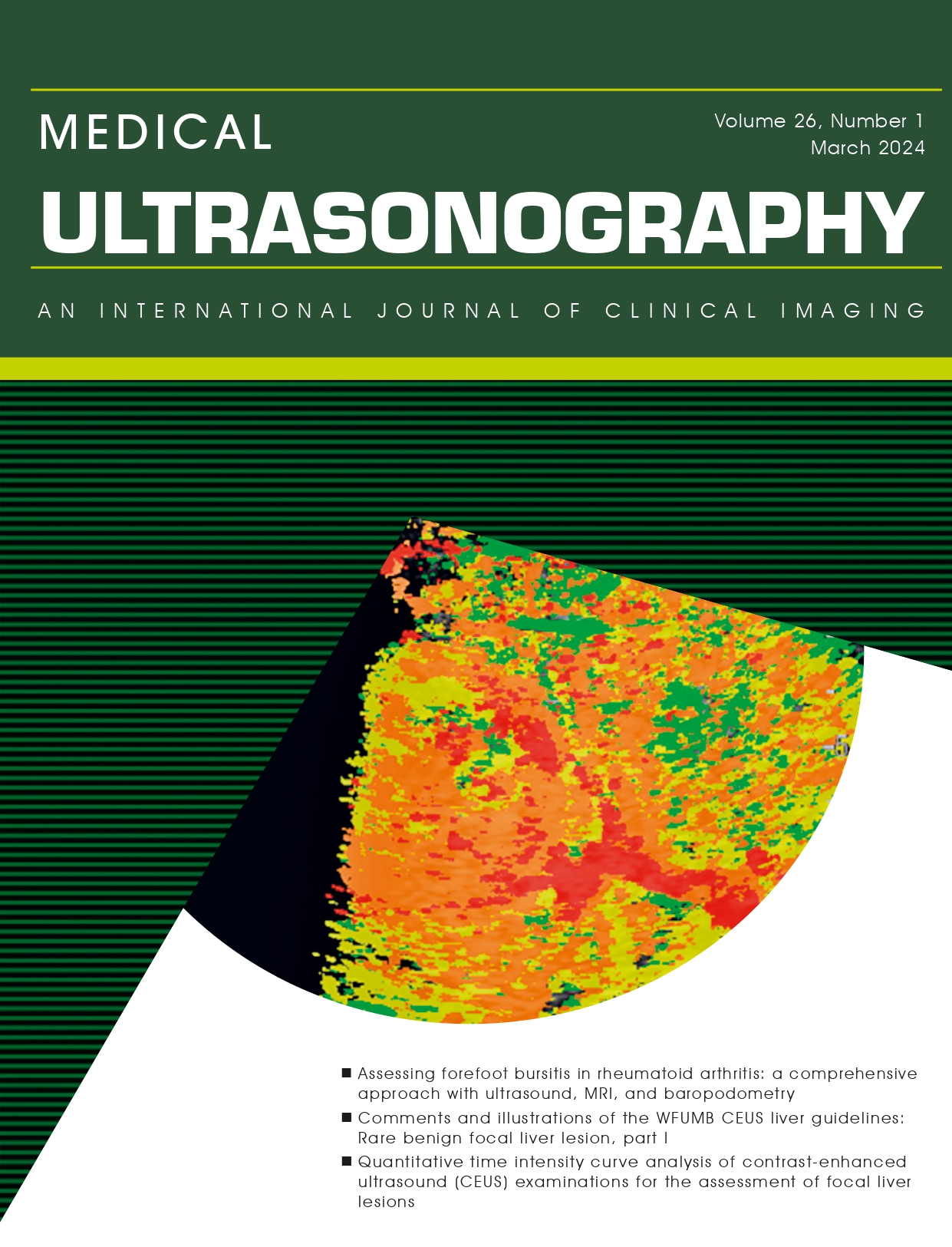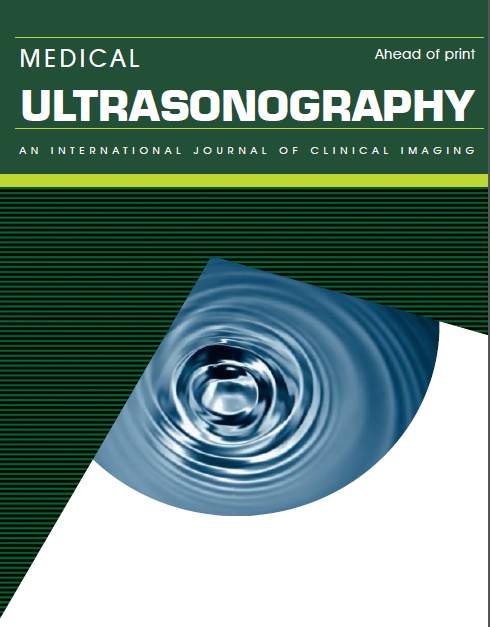Application value of real-time shear wave elastography in differential diagnosis of testicular torsion
Abstract
Aim: To evaluate the clinical value of real-time shear wave elastography (SWE) in differential diagnosis of testicular torsion and acute orchiditis.
Material and methods: During a 3-year period, 14 cases of testicular torsion and 16 cases of acute orchiditis met the inclusion criteria. Young’s modulus maximum hardness (Emax) of testicular capsule region, middle testicular parenchyma, warped spermatic segment or inferior spermatic segment was measured in each group. SWE “stiff ring sign” of testis refers to the appearance of a red ring in the testicular capsule area and “stiff knot sign” of spermatic cord refers to the appearance of a red knot in the lower segment of the spermatic cord.
Results: Emax value of the testicular capsule in the torsion group was higher than in the acute inflammation group (138.76±58.27 vs 16.40±4.71 kPa, p=0.0001). Emax value in the middle parenchyma of the testis showed no statistically significant difference between groups (p=0.053). Emax value in the twisted spermatic segment was higher than that in the lower spermatic segment with acute inflammation (166.61±60.07 vs 14.14±4.93, p=0.0001). In the torsion group, 12 testicular capsule areas showed “stiff ring sign” and all twisted segments of spermatic cord showed “stiff knot sign” but no signs were found in the inflammatory group.
Conclusions: “Stiff ring sign” of testis, “stiff knot sign” of spermatic cord, high stiffness of the testicular capsule and in the twisted spermatic segment are the typical SWE findings of testicular torsion, with important clinical value in the differential diagnosis of testicular torsion and acute orchiditis.
Keywords
DOI: http://dx.doi.org/10.11152/mu-2200
Refbacks
- There are currently no refbacks.




